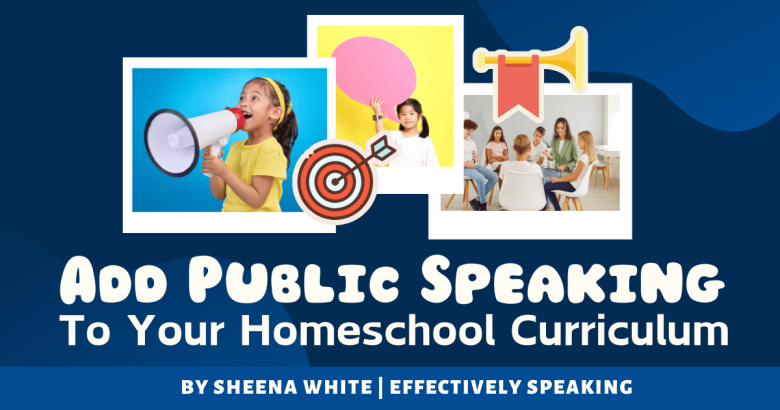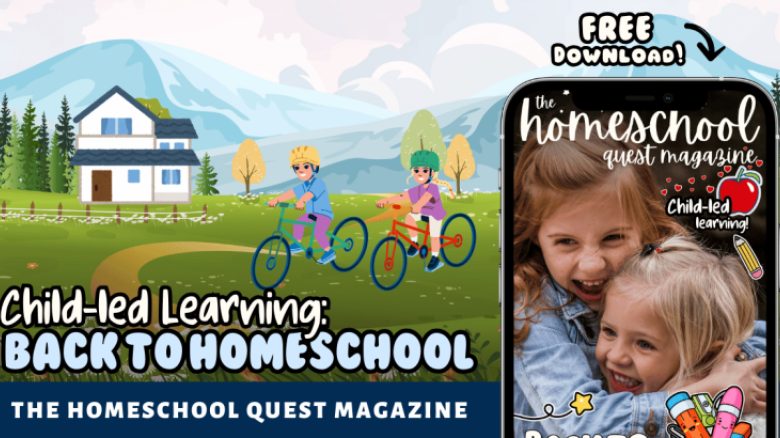By Sheena White Of Effectively Speaking
What’s one of the most important skills your children should master?
Public Speaking!
Even if they never have to give a speech in front of an audience? Yes!
Why? Because of all the techniques they will learn, the additional skills they will master, and the tremendous confidence they will gain!
We are talking all the time--some of us too much if we are honest! But others, not enough.
Imagine if your child could easily participate in conversations with new acquaintances to make new friends, engage in discussions and clearly express their opinions, entertain others with engaging stories, explain, persuade and inspire, and do all this using a strong, clear, expressive voice.
These abilities can all be gained through the practice of public speaking whether this is in a curriculum-based approach or interest-based learning.
The children can learn a variety of new communication skills while still focusing on their topics of interest, consolidate their learning when explaining, describing or persuading others and enjoy sharing what they know when talking about their interests with family and friends.
It is definitely worth it to add Effective Communication skills to your homeschool environment.
“But how do I fit it in? We are already stretched as it is!”
“I am not a confident speaker myself. How do I teach the necessary skills to my children?”
Just take it step by step. Consider using everyday conversations and dinner table discussions as teaching and learning platforms. Work with your children and develop your own communication skills, learning yourself while teaching others.
Here are 10 ways to add public speaking into your homeschool curriculum!
1. Instead Of A Book Report
You could use public speaking as an alternative to writing a book report, explaining a science experiment or historic event, for example. This is especially helpful for challenged or reluctant writers.
2. Teach to others
Ask your students to teach a math concept to someone else. This helps to reinforce the information as well as develop explanatory speaking skills.
3. Use it as part of interest-based learning
Encourage your child to share their knowledge and enthusiasm of their favorite topics through a presentation. Have them “show and tell” their illustrations and collections, use a chart to explain a process or point out the details.
Describe the features or even act as a tour guide on a walking tour to view their topic of interest, like on a nature walk or museum or art gallery visit.
4. Teach the ways to organize information through public speaking
Chronological order can be taught by assigning short presentations on topics such as: how to make a bed, or a favorite snack, repair a bike tire or tell how a volcano erupts.
You could also teach the process of cause and effect this way too. Possible topics might include how hurricanes occur.
Spatial Organization can be practiced by describing a historic monument or a family vacation and talking about what you did at each location.
5. The Concept Of Support
Develop the concept of using “support” to make information clearer and more persuasive by assigning presentations. While learning about the importance of details, facts, examples, personal experiences, stories, analogies etc. your child uses these in their formal and informal presentations, discussions and conversations.
He or she could be asked to provide “support” for their reasons why Disneyland is a better choice for the next family vacation than a trip to Yosemite National Park, for example.
6. Practice, practice, practice!
Practice persuasive speaking for the next community fundraiser to encourage family, friends and neighbors to purchase or donate.
7. Make public speaking part of a family fun night
Put topics on strips of paper and then drop them into a hat or box. Each family member chooses a topic out of the hat, thinks for a moment and then speaks on the topic for 1 to 2 minutes. The goal is to stay on the subject and give details as well as other forms of support.
8. Explaining A Card Or Board Game
For another family activity, assign your child the task of explaining how to play a card or board game. He or she needs to think about the details carefully such as:
What the goal of the game is, how many players can play, what the equipment is and how it is used, and how to start the game.
Any additional rules and explanations can be added throughout the first game, otherwise, it can all become quite lengthy and even confusing!
This is a good activity for developing explanatory speaking, an extremely important skill to have.
9. Stand With An Audience
A point to keep in mind is that when working on more formal public speaking, have your children stand up in front of an audience, even if it is just a pretend one.
Being seated is fine for many speaking activities but standing adds another level of experience. A speaker becomes more focused and the speaking is more structured. As a result, more effort is often used.
10. Be creative and have fun with public speaking activities.
- You could ask your child to describe a personal event such as their last soccer game as if on a sports broadcast.
- Interview a sibling with a real or pretend mic, (wooden spoons work surprisingly well!),
- Act as a Master of Ceremonies for a Family Talent Night.
- Dress up as a book character or famous individual and speak about his/her life experiences.
- You could videotape the presentations or simply cut the bottom out of a large cardboard box, place it on its side and use it as if it is a TV or tablet screen with the child seated behind it.
Don’t forget to practice presentation skills too, such as using the appropriate volume and pace for the size of the space and type of audience.
Your children Should be encouraged to be:
- Loud enough to be heard by everyone.
- Slow and clear enough to be understood.
- Expressive enough to make the information, ideas and feelings interesting and full of meaning so an audience will want to listen.
This is important in all types of speaking and not just public speaking. Join in and develop your own public speaking skills!
Read More!
- Log in to post comments


